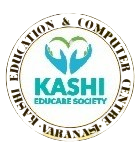The O Level (Officer Level) computer course is a certification course offered by the National Institute of Electronics & Information Technology (NIELIT), under the Ministry of Electronics and Information Technology (MeitY) in India. The course is designed to impart essential knowledge and skills related to computer applications, programming, and data management. It is primarily aimed at individuals who want to pursue careers in IT, computer science, or software development.
Here is a typical O Level (Computer Course) content outline:
1. Introduction to Computers
- Basic Computer Fundamentals:
- Introduction to computers, components, and types (Personal computers, Workstations, Mainframes)
- Basic computer architecture (CPU, RAM, storage devices)
- Input and output devices (Keyboard, Mouse, Monitor, Printer)
- Operating systems overview (Windows, Linux, Mac OS)
- Types of Software:
- System software (Operating systems, Device drivers)
- Application software (Word processors, Spreadsheet software, Presentation tools)
2. Computer Organization and Architecture
- Understanding Computer Architecture:
- Basic hardware components: CPU, memory, and storage
- System bus and its components (Data bus, Address bus)
- Storage devices: Hard Disk, SSD, Optical Media, Flash Drives
- Memory and Storage Management:
- Types of memory: Primary memory (RAM), Secondary memory (Hard Drive)
- Understanding cache, virtual memory, and memory management
- File systems (FAT, NTFS, EXT)
3. Operating Systems (OS)
- Operating System Concepts:
- Introduction to Operating Systems: Functions, Types (Batch, Time-sharing, Real-time)
- File management, Processes, and Memory Management
- Managing Input/Output devices and User interfaces
- Basic commands for file management in Windows and Linux
- Common Operating Systems:
- Features and functionalities of Windows OS
- Basic Linux commands and shell programming
- Linux file system and file handling commands
- File permission, user management, and task scheduling
4. Programming in C
- Introduction to Programming Concepts:
- Basic structure of a C program
- Data types, variables, and constants
- Input and output functions (scanf, printf)
- Operators and expressions in C (Arithmetic, Relational, Logical)
- Control Structures:
- Conditional statements (if, else, switch)
- Looping structures (for, while, do-while)
- Functions: Definition, declaration, and function call
- Arrays and Pointers:
- Arrays and multidimensional arrays
- Introduction to pointers and memory handling
- File Handling:
- Reading from and writing to files
- File operations: fopen(), fclose(), fread(), fwrite()
- Data Structures (Basics):
- Introduction to arrays, stacks, and queues
5. Internet Technology
- Internet Basics:
- What is the Internet? How does it work? (ISPs, IP addressing)
- Types of Internet connections (Dial-up, Broadband, Wi-Fi)
- Browsers and Search Engines (Google Chrome, Mozilla Firefox)
- World Wide Web (WWW):
- Introduction to HTML (Basic structure of an HTML page)
- Using HTML tags to create web pages (headings, paragraphs, links, lists)
- Formatting text, creating tables, and inserting images in HTML
- Web Browsing and Email:
- Using email services (Gmail, Yahoo Mail)
- Creating, sending, and receiving emails, including attachments
- Online communication tools (chat, video calls)
- Web Technologies:
- Introduction to Web Development tools (Text Editors, IDEs)
- Basic knowledge of Web Servers and Client-Server architecture
6. Data Management and Database Systems
- Introduction to Databases:
- Basic database concepts (Tables, Records, Fields)
- Data types, keys (Primary Key, Foreign Key)
- Database management systems (DBMS) and RDBMS
- Understanding relational models and schemas
- SQL (Structured Query Language):
- Introduction to SQL
- Data Definition Language (DDL) commands (CREATE, ALTER, DROP)
- Data Manipulation Language (DML) commands (SELECT, INSERT, UPDATE, DELETE)
- SQL queries for data retrieval and sorting
- Database Design:
- Normalization and Denormalization concepts
- Relationship between tables (One-to-many, Many-to-many)
7. MS Office Suite
- Microsoft Word:
- Word processing and document formatting
- Using styles, templates, and sections in Word
- Inserting tables, images, and graphs into documents
- Mail Merge for bulk document creation
- Microsoft Excel:
- Excel interface and spreadsheet basics
- Data entry and formatting cells
- Basic functions (SUM, AVERAGE, MIN, MAX)
- Creating and formatting charts (Bar, Pie, Line)
- Working with data filters, pivot tables, and functions
- Microsoft PowerPoint:
- Creating presentations: slide layouts and formatting
- Inserting multimedia (Images, Audio, Video)
- Using transitions, animations, and slide design techniques
- Delivering and presenting slideshows
8. Networking Basics
- Introduction to Networking:
- What is a computer network? (LAN, WAN, MAN)
- Types of networks (Ethernet, Wi-Fi, Bluetooth)
- Network components (Router, Switch, Hub, Modem)
- Networking Concepts:
- Understanding IP addressing and DNS (IPv4 and IPv6)
- Introduction to TCP/IP protocol suite
- Basics of network security (Firewalls, VPN, Encryption)
- Network Configuration:
- Configuring network settings on a computer (Wi-Fi, Ethernet)
- Troubleshooting basic network problems
9. Software Engineering Concepts (Optional)
- Introduction to Software Engineering:
- Software development life cycle (SDLC) stages
- Overview of software design and testing
- Basic concepts of debugging and error handling
- Algorithms and Problem Solving:
- Introduction to algorithms and their efficiency
- Problem-solving strategies (Divide and conquer, Greedy approach)
10. Practical and Project Work
- Practical Exercises:
- Hands-on practice with programming (C programming)
- Using MS Office tools for office automation tasks
- SQL queries for database management
- Mini Project:
- A final project that applies the concepts learned, such as:
- Designing a simple database system
- Creating a basic website using HTML
- Developing a basic console application in C
- A final project that applies the concepts learned, such as:
